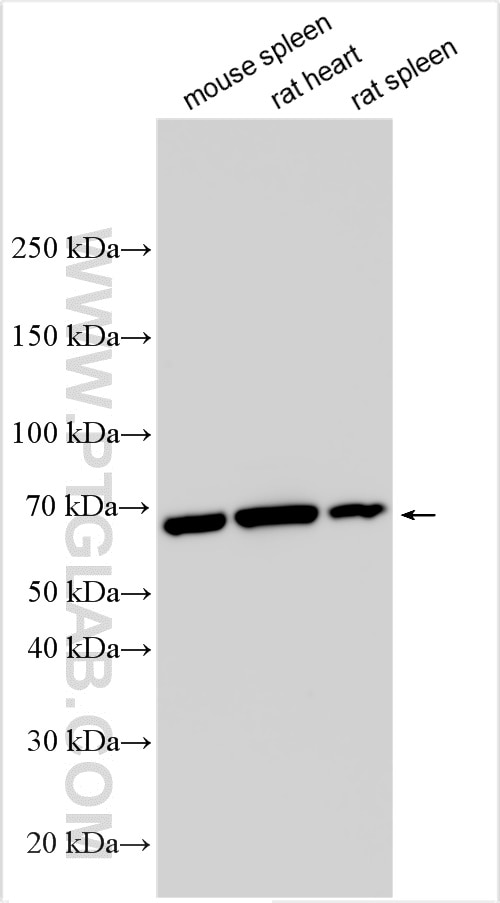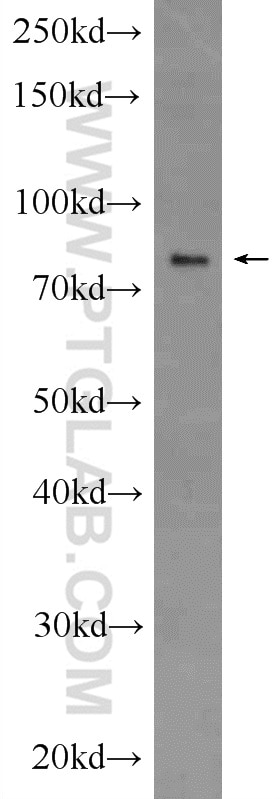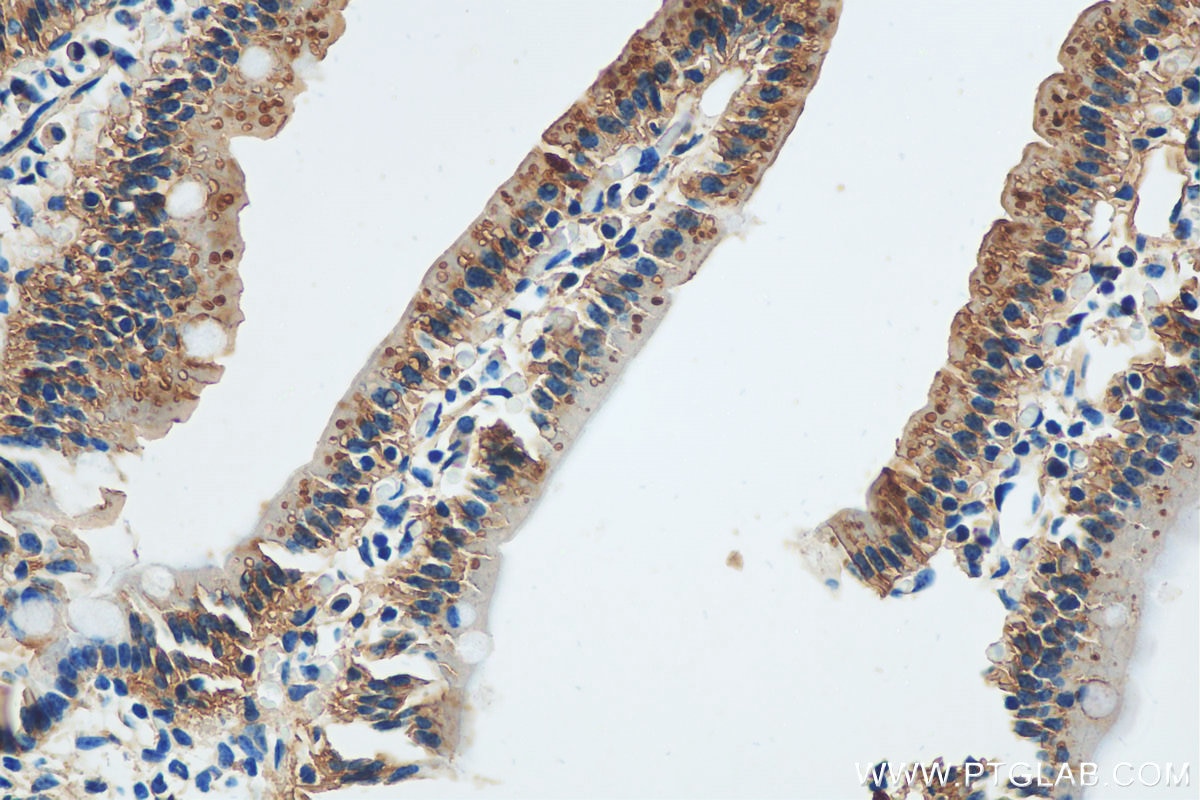Validation Data Gallery
Tested Applications
| Positive WB detected in | mouse spleen tissue, rat liver tissue, rat heart tissue, rat spleen tissue |
| Positive IHC detected in | mouse small intestine tissue Note: suggested antigen retrieval with TE buffer pH 9.0; (*) Alternatively, antigen retrieval may be performed with citrate buffer pH 6.0 |
Recommended dilution
| Application | Dilution |
|---|---|
| Western Blot (WB) | WB : 1:1000-1:8000 |
| Immunohistochemistry (IHC) | IHC : 1:50-1:500 |
| It is recommended that this reagent should be titrated in each testing system to obtain optimal results. | |
| Sample-dependent, Check data in validation data gallery. | |
Published Applications
| KD/KO | See 1 publications below |
| WB | See 125 publications below |
| IHC | See 16 publications below |
| IF | See 21 publications below |
| IP | See 6 publications below |
| CoIP | See 4 publications below |
Product Information
17519-1-AP targets RIPK1-Specific in WB, IHC, IF, IP, CoIP, ELISA applications and shows reactivity with mouse, rat samples.
| Tested Reactivity | mouse, rat |
| Cited Reactivity | human, mouse, rat, pig, yeast |
| Host / Isotype | Rabbit / IgG |
| Class | Polyclonal |
| Type | Antibody |
| Immunogen |
Peptide 相同性解析による交差性が予測される生物種 |
| Full Name | receptor (TNFRSF)-interacting serine-threonine kinase 1 |
| Calculated molecular weight | 76 kDa |
| Observed molecular weight | 70-80 kDa |
| GenBank accession number | NM_003804 |
| Gene Symbol | RIPK1 |
| Gene ID (NCBI) | 8737 |
| RRID | AB_10642833 |
| Conjugate | Unconjugated |
| Form | |
| Form | Liquid |
| Purification Method | Antigen affinity purification |
| UNIPROT ID | Q13546 |
| Storage Buffer | PBS with 0.02% sodium azide and 50% glycerol{{ptg:BufferTemp}}7.3 |
| Storage Conditions | Store at -20°C. Stable for one year after shipment. Aliquoting is unnecessary for -20oC storage. |
Background Information
RIPK1(Receptor-interacting serine/threonine-protein kinase 1) is primarily involved in mediating TNF-R1-induced cell activation, apoptosis, and necroptosis and belongs to a novel class of kinases that function in cell survival and cell death mechanisms(PMID:22685397 ). It has 2 isoforms produced by alternative splicing. It also can exist as a protein with a lower molecular weight of about 25 kDa and 45 kDa in HAEC and HUVEC(PMID:22685397).
Protocols
| Product Specific Protocols | |
|---|---|
| IHC protocol for RIPK1-Specific antibody 17519-1-AP | Download protocol |
| WB protocol for RIPK1-Specific antibody 17519-1-AP | Download protocol |
| Standard Protocols | |
|---|---|
| Click here to view our Standard Protocols |
Publications
| Species | Application | Title |
|---|---|---|
Acta Pharm Sin B A new perspective of triptolide-associated hepatotoxicity: the relevance of NF- κ B and NF- κ B-mediated cellular FLICE-inhibitory protein. | ||
Nat Commun Regulation of RIPK1 activation by TAK1-mediated phosphorylation dictates apoptosis and necroptosis. | ||
Sci Total Environ Evaluation of 6-PPD quinone toxicity on lung of male BALB/c mice by quantitative proteomics | ||
Sci Total Environ Glycidol induces necroptosis and inflammation through autophagy-necrosome pathway in renal cell and mice | ||
Cancer Res Proteomic mapping and targeting of mitotic pericentriolar material in tumors bearing centrosome amplification. |



